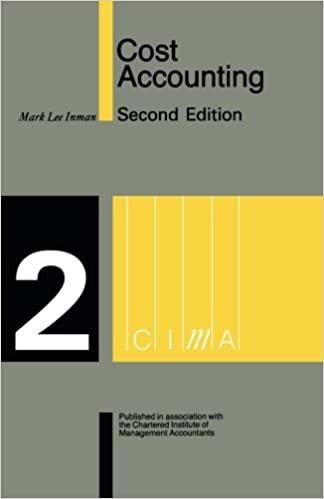Question
1- Bill is prosecuted for arson. Bill denies committing the crime. At trial, Bill calls Leonard, a law officer who interviewed Omar, the owner of
1- Bill is prosecuted for arson. Bill denies committing the crime. At trial, Bill calls Leonard, a law officer who interviewed Omar, the owner of the torched building. Bill shows Leonard a document, which Leonard identifies as the report he prepared after the interview. The report describes the physical condition of the building and states that Leonard showed Omar a group of photographs, and that Omar identified an individual as the one he saw running from the building just before the fire broke out. That person was not Bill. Bill represents that he will call Omar to testify later at the trial. Bill now offers Leonard's report into evidence. Which of the following statements is most likely correct?
a.The report is hearsay and inadmissible under the public records exception because it contains matters observed pursuant to duty imposed by law, as well as factual findings resulting from an investigation. Ornaisstatement is thus also inadmissible.
bThe report is hearsay and admissible under the public records exception. Omar statement is admissible non-hearsay if Omar testifies and is subject to cross-examination concerning the statement.
cThe report is hearsay and the description of the building is admissible under the public records exception. The part of the report describing Omar's identification of the perpetrator is inadmissible because Leonard lacks personal knowledge of who committed the crime.
d.The report is non-hearsay because it is not offered to prove the truth of the matter asserted.
e.None of the above.
2-Angie sues Ohio Heating for negligence for injuries suffered when Ohio allegedly failed to fix Angie's heater during a strong cold snap. Angie, who is elderly and housebound, alleges that she phoned Ohio as soon as the heater failed, that Ohio agreed to respond quickly, and that Angie waited for an entire night, but Ohio never appeared. While waiting for Ohio, Angie claims she suffered cold-related injuries to her fingers and toes. Angie testifies that she placed her call to the number for Ohio listed in the phone book, and that a voice answered, Heating Service." Ohio denies ever receiving the call and moves to strike Angie's testimony from the record. How should the court rule?
a.The court should deny Ohio's motion because there is sufficient evidence to support a finding that the call was actually placed to Ohio.
b.The court should deny the motion if it finds that the call was not placed to Ohio.
c.The court should grant the motion because the party answering the phone did not identify itself as Ohio Heating.
d.The court should deny the motion because Angie has already testified, and it is too Tate to keep the evidence from the jury.
e.None of the above.
Step by Step Solution
There are 3 Steps involved in it
Step: 1

Get Instant Access to Expert-Tailored Solutions
See step-by-step solutions with expert insights and AI powered tools for academic success
Step: 2

Step: 3

Ace Your Homework with AI
Get the answers you need in no time with our AI-driven, step-by-step assistance
Get Started


